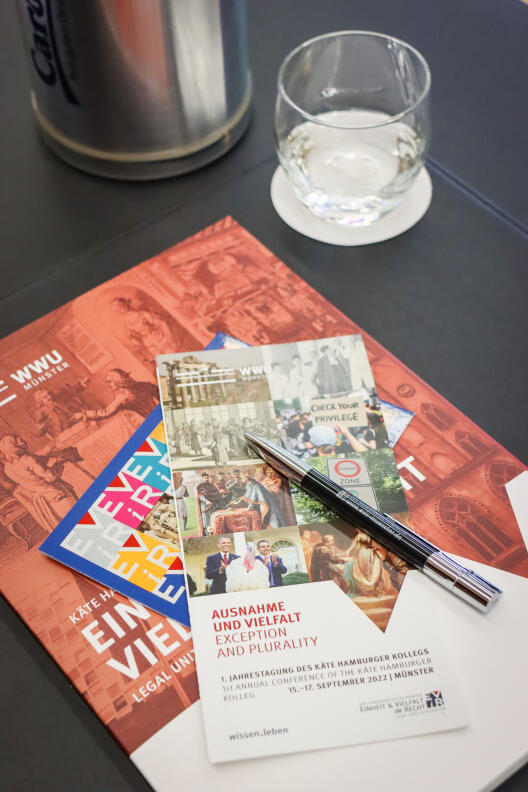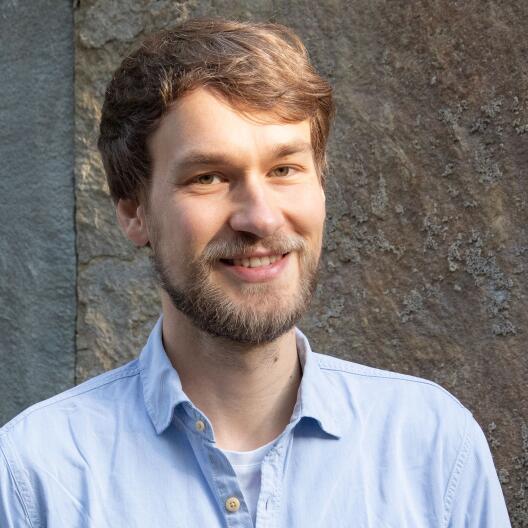From exception to plurality?
Report on the Käte Hamburger Kolleg annual conference, 15-17 September 2022
by Benjamin Seebröker
Is the relationship between unity and plurality similar to that between rule and exception? And do exceptions lead to legal pluralism? Or is it rather exceptions that are needed to create and maintain unity? These questions, and thus the overarching theme of the previous two terms, were the focus of the first annual conference of the Käte Hamburger Kolleg “Legal Unity and Pluralism”.
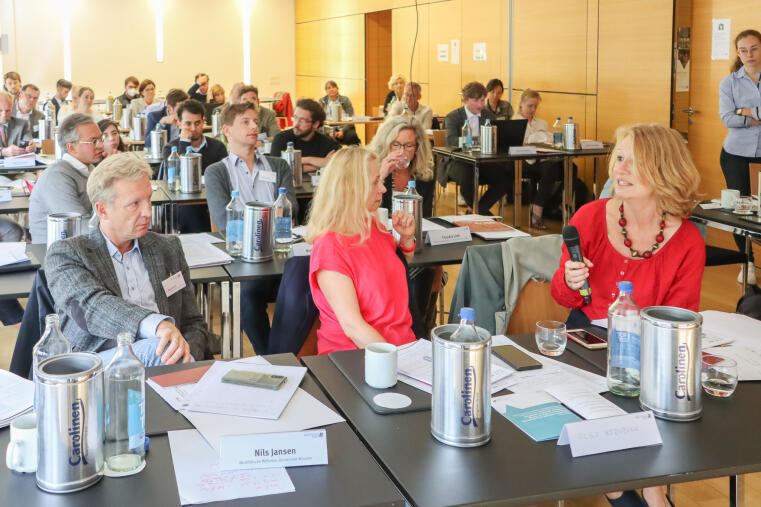
Using different approaches and topics from various periods ranging from Roman antiquity to the 20th century, the papers illuminated the issue of exception and legal pluralism from many angles. This led to lively and fruitful discussions, both after the individual lectures and at the end of each of the three sections.
It quickly became apparent that “exception” can be understood in different ways. On the one hand, it can denote a special case that is already inherent in the (legal) norms, with the exception being part of the rule and therefore not necessarily a phenomenon of legal pluralism. On the other, though, it can also describe situations that are not anticipated at the normative level and that constitute a deviation from “normal” procedures. The boundaries between these two perspectives are blurred, however, as Quentin Verreycken (Louvain) showed using the example of the power to pardon in late medieval France and England. In his case study, the frequent use of grace rather raises the question of when an exception becomes in turn the rule.
In general, central concepts and their use were often the subject of discussion. Ralf Seinecke (Frankfurt am Main) laid the foundations for this in his lecture on a possible “plural turn”, when he pointed out the various concepts of legal pluralism that exist in current research at the same time. Legal pluralism, multinormativity, normative knowledge, as well as legal fragmentation, sometimes not only denote different phenomena, but also inevitably have political and ideological implications. As was emphasised once again in the final discussion, it is important for scholars to reflect on the discursive and historical contexts of the concepts in order to use and discuss them fruitfully with other scholars, and especially so in an interdisciplinary environment.
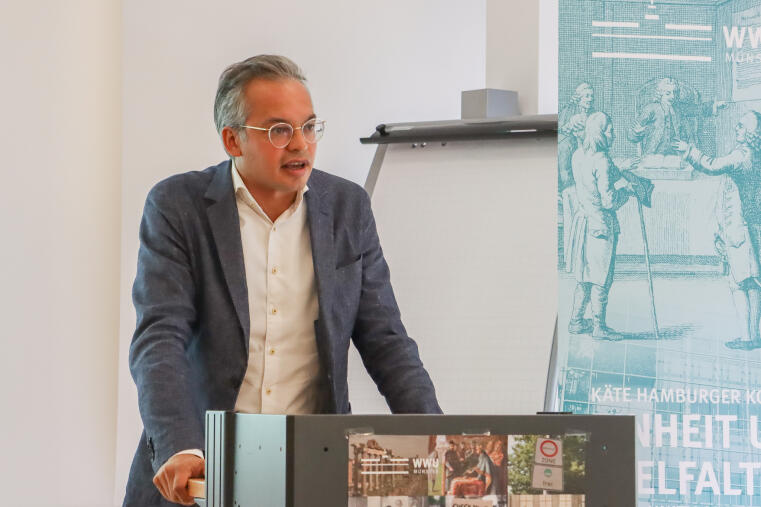
The fact that the discourses specific to each discipline sometimes differ significantly from one another became apparent, for example, in the question of what is to be regarded as “law”. Opinions diverge greatly between anthropology and legal history, but also within legal history itself, with regard, for example, to the question of whether norms need to be tied to an institution in order to be considered “law”. It will be a central task of the Kolleg in the future to promote a better interdisciplinary understanding by offering a forum for discussion for the various disciplines working on issues related to the unification of law as well as legal pluralism. The “Münster Glossary on Legal Unity and Pluralism”, of which the first edition has been published recently, aims to provide a starting point for this endeavour.
Another aspect introduced as a characteristic of “law” into the discussion by Peter Oestmann (Münster) are the demand and the chances to enforce legal norms. Historically speaking, the chance to effectively enforce norms came only very late in Europe. As Jakub Urbanik (Münster/Warsaw) and Matthias Bähr (Dresden) made clear in their papers, neither antiquity, nor the Middle Ages, and nor the early modern period had the structural preconditions necessary to apply law reliably and comprehensively, and to punish violations of these norms. However, the idea or ideal of unified law was certainly present in contemporary discourses, at least in the early modern period, as attempts to implement uniform regulations show. This could be seen most clearly in the (not very successful) introduction of the new criminal law under Philip II in the Netherlands in 1570, which Alain Wijffels’ (Leuven) paper focused on.
This problem led directly to the question of power and its relationship to legal unity or pluralism. The chances of enforcing norms and applying law uniformly can be increased by concentrating power, for example on the part of the authorities. However, this is always limited to the respective social or territorial sphere of influence. Conversely, extending the claim to validity of law to further groups of people or regions can also enlarge spheres of power and rule. Furthermore, power is unequally distributed among different social groups within societies. Groups that have a lot of power can sometimes not only benefit from exceptions, for example in the form of privileges, but also enforce their own norms, this in turn leading to normative plurality. The connection between power and legal pluralism or unity is thus ambivalent, and a more systematic approach is required to illuminate the phenomenon.
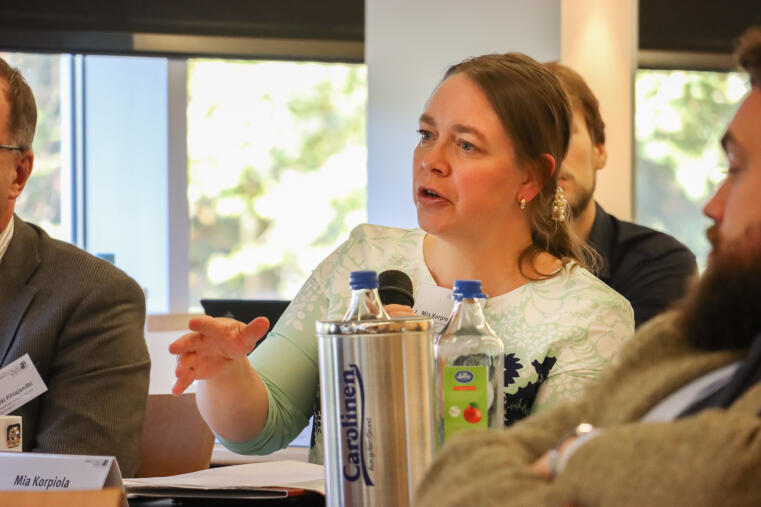
The conference showed once again that legal pluralism is particularly evident in inheritance, family, and property law, as was demonstrated not only in the paper on early modern Ireland, but also in the talks given by Christoph Lorke (Münster) on marriages with foreigners in Germany (1870-1930) and by Alexander de Castro (UniCesumar) on special legislation for minors in 20th-century Brazil.
However, the mere coexistence of different norms is usually unproblematic and, as Ulrike Ludwig (Münster) emphasised, should be distinguished from an “active” collision. It is imperative to update competing norms in order to be able to assess existing legal pluralism at all, since the coexistence of different laws and legal institutions has from a historical perspective been by no means always conflictual. On the contrary, Yvonne Kleinmann (Halle/Saale) described the coexistence of Jewish and Christian courts within the city of Rzeszów in early modern Poland-Lithuania in terms more of task-sharing than of competition.
All in all, the issue of “exception and plurality” triggered many discussions that went beyond the immediate subject of the conference, as was reflected not least in the opening statements of the three section leaders at the beginning of the final discussion. The conference thus provided important impulses for the Kolleg’s further work, while raising key questions outlined only briefly here – questions that need to be discussed further in the future.
Impressions of the Annual Conference
